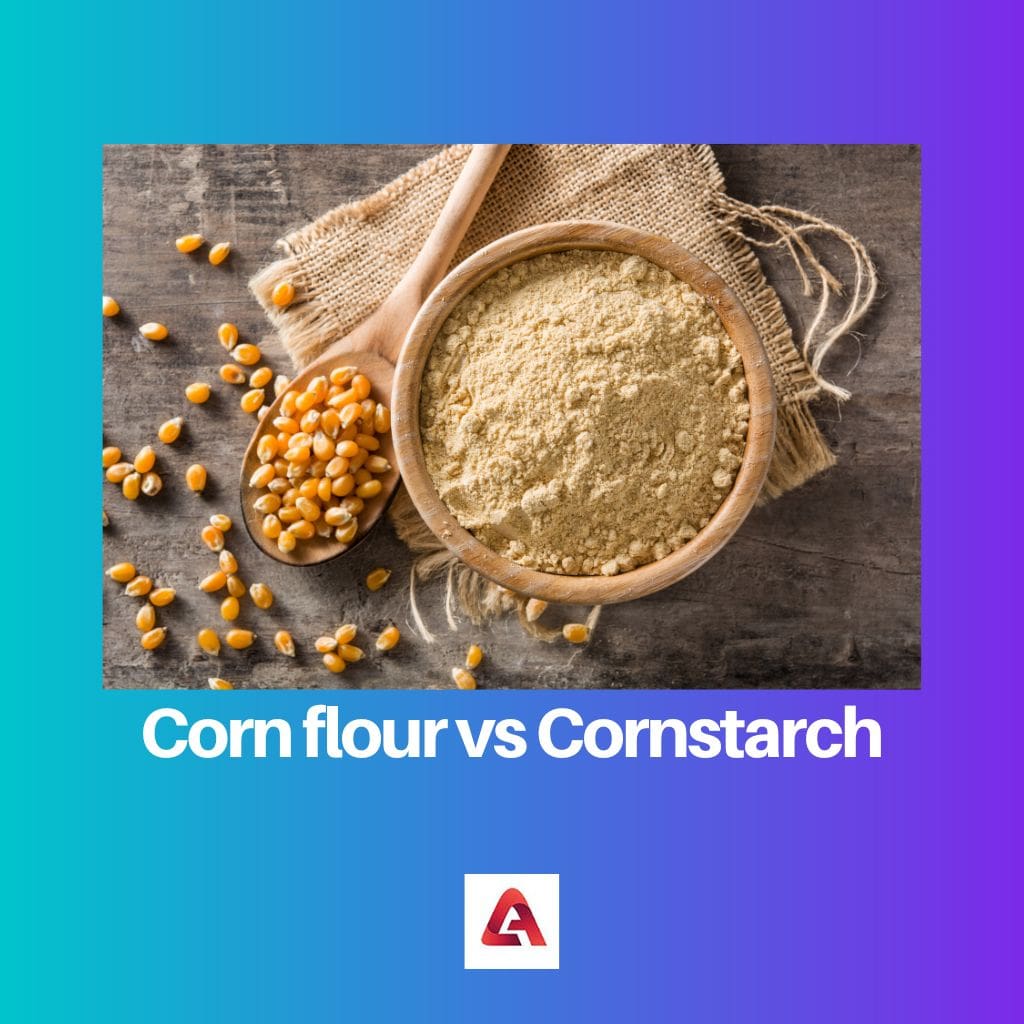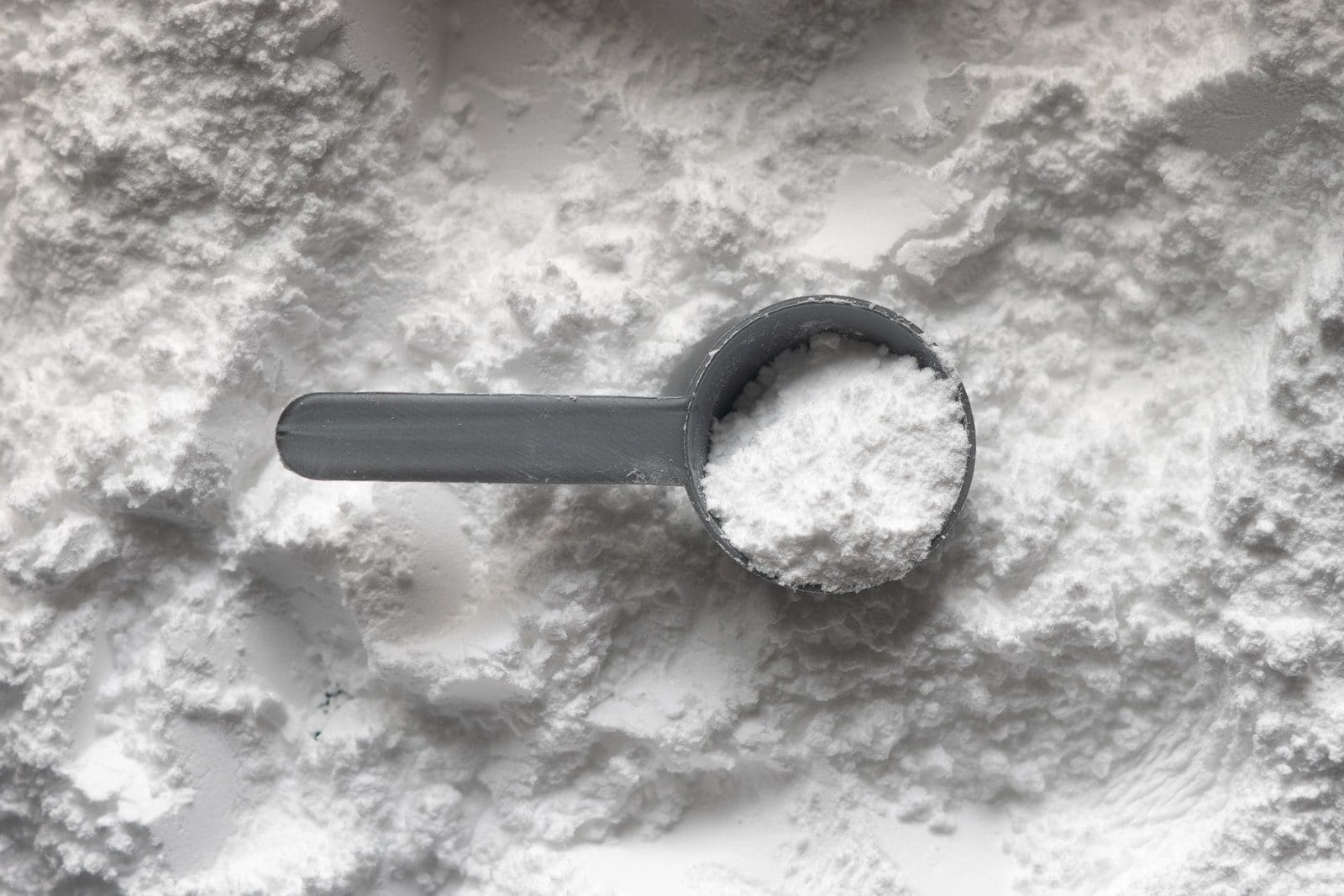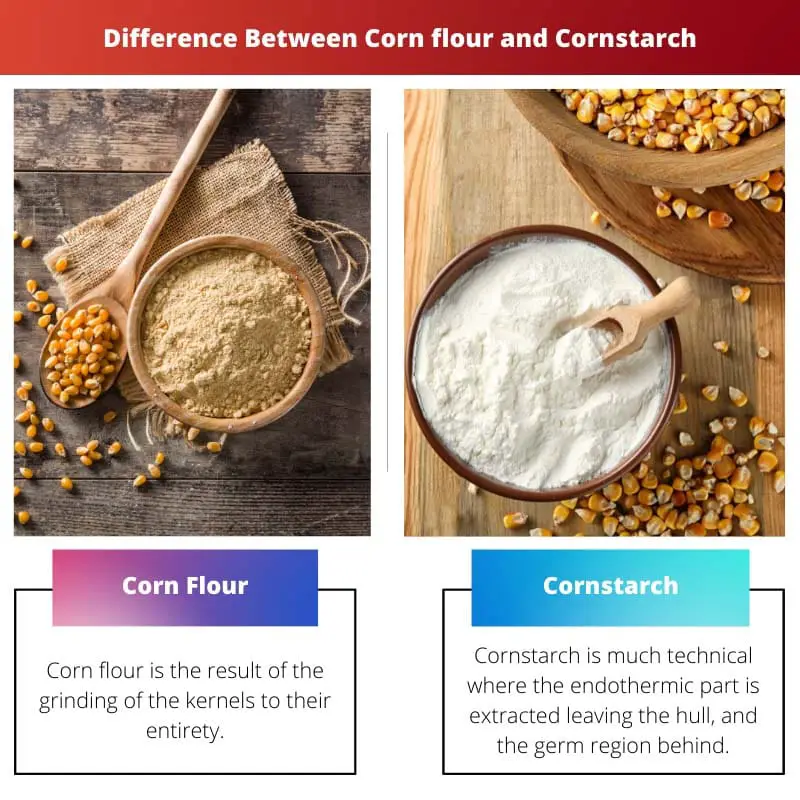Maize is a cereal crop, the origin of which is Mexican, where it was first cultivated about 10,000 years ago, as per research.
Maize plants are interchangeable with corn. It’s the staple food in many parts of the world and is produced more than any other grain,
It’s a versatile crop, and not only does it serve human consumption, but also used as fodder for animals. Each part can be used for a different purpose based on its nutritional content.
The sweetness and the flavored corn provide a way of its usage in the bakery,
it’s rich in Vitamin B and contains several micronutrients used for medicinal purposes; the texture and adhesive properties help the industry produce glue and adhesives.
The flour made from the grinding of corn is rich in carbohydrate content with protein, vitamins, and minerals in small proportions; the grinding can be manipulated to form cornstarch and oil from it.
Key Takeaways
- Corn flour is a finely ground powder made from whole corn kernels, including the germ, bran, and endosperm, and is used in baking and cooking as a thickener or flour substitute.
- Cornstarch is a white, powdery substance extracted from the endosperm of corn kernels and is used primarily as a thickening agent in cooking and baking.
- Both corn flour and cornstarch are derived from corn and used in cooking, but corn flour is a whole-grain product with a yellowish color and nutty flavor, while cornstarch is a refined starch with a neutral taste and color.
Corn flour vs. Cornstarch
The difference between Corn flour and Cornstarch is the way both are processed. Corn flour is the outcome when corn kernels in a mature and dry state are ground to their entirety, whereas cornstarch, just like any flour, is a ground powder but a refined version with removed protein and fiber parts.

Comparison Table
| Parameter of Comparison | Corn flour | Cornstarch |
|---|---|---|
| Processing | Corn flour is the result of grinding the kernels to their entirety. | Cornstarch is much more technical, where the endothermic part is extracted, leaving the hull and the germ region behind. |
| Nutrient | One cup of corn flour calories count to 110, the carb amount is fairly low with 3 gm protein, and it contains micronutrients. | 120 calories, 10 calories more than cornflour, it’s protein deficient and has a lesser percentage of minerals to it |
| Uses | Used in the bakery because of its sweet nature and is mixed with wheat and other flour to attain a higher fiber content and nutritious value. | Mostly used to thicken the soup, it has other uses in the medical field and industries in the formation of adhesives. |
| Gluten | It contains gluten. Thus it is suitable for dough as it retains shape and becomes elastic. | The endosperm region doesn’t contain protein, so it’s gluten-free. |
| Flavor | It tastes similar to corn, with an earthy and slightly sweet taste. | Flavorless and has hardly any taste since the flavored part is removed. |
What is Cornflour?
Corn flour is a whole grain flour made from the mature and dried kernels of corn and is used in the processing to entirety.
Each part, hull, germ, and endosperm, are utilized during the grinding and contain most macro and micronutrients like carbohydrates, protein, vitamins, and minerals.
They are yellow but can vary to white, a hue of blue depending on the variety of corn breed chosen.
It’s versatile, and a bit sweet; it is extensively used in bread and bakery items and can be mixed with wheat to upgrade the fiber and nutrition value.
It can be mixed with a wide variety of cereals which can improve fiber and nutrition levels. Corn flour production is more than any cereals and is a staple diet of most nations and parts of the world.

What is Cornstarch?
Cornstarch, like any other flour, is a fine ground form of the kernels of corn minus the yellowish part, which contains all the protein, fiber, and micronutrients like potassium and magnesium.
It is specifically the endospermic part; the hull and germ are removed, which are further utilized in the processing of oils. It is versatile, used not just as a food item but in medicine and industrial purposes.
Until 1851 it was extensively utilized in industrial use, starching laundry, and adhesive.
It is widely used in marinades, soups, and gravies (liquid-based foods) as a thickening agent for food purposes. The cost of a food product can be reduced by using it in cheese and yogurt.
It also has medicinal properties; being rich in Vitamin B, it is used in medicines, and also for patients with glycogen storage problems, it is used as an alternative to serving glucose.
While in the industry, it is traditionally used as a binder or an adhesive and is used to compile papers as it dries transparent.

Main Differences Between Corn flour and Cornstarch
- The main difference between Corn flour and Cornstarch is the processing that goes into it. When the kernels are used as a whole and ground into a fine powder, it forms cornflour, cornstarch, on the other hand, is the result of the grinding of the endospermic region and removal of fiber and protein.
- Corn flour has a similar texture as that of raw corn, with sweet and earthy grains; cornstarch lacks the flavor and is therefore used to thicken soups and gravies while cooking and doesn’t influence the taste.
- Corn flour varies in color. The plant variety can be yellow, white, or blue; cornstarch is chalk-like white.
- Corn flour is versatile and can be added to other flours to enrich it. In bakery items, because of its flavor, cornstarch is a different level of versatility, not just used as a thickening ingredient in the food but used in the medical field and industrial use too.
- The presence of protein makes the cornflour rich in gluten, cornstarch, however, consists of endosperm, thus lacking gluten.

- https://www.sciencedirect.com/science/article/pii/S095671350500229X
- https://bmcvetres.biomedcentral.com/articles/10.1186/s12917-018-1538-5

The way the article detailed the differences between corn flour and cornstarch is impressive. A substantial and thorough discussion.
Absolutely, the comparison table was particularly helpful in understanding the contrast between the two.
I never knew corn flour is rich in Vitamins and minerals. The comparison table is very helpful in distinguishing between corn flour and cornstarch. Well done!
Agreed, it’s incredible how versatile corn and maize are in their different forms.
I had no idea that corn flour and cornstarch had different processing methods. This article provides a clear comparison between the two.
Absolutely, I learned something new today – great insights!
It’s quite intriguing indeed, a nice read!
This article is exceptional in providing an in-depth understanding of the characteristics of corn flour and cornstarch.
Indeed, the details about the nutrition and uses are incredibly useful and well-presented.
I’m familiar with cornstarch but didn’t realize it was extracted from the endosperm of corn kernels. This article provided valuable information!
I agree, the detailed explanations made it easier to understand.
I didn’t know corn and maize were essentially the same thing. This interesting article laid down facts about their different uses, thank you!
I was surprised too! The details about the differences between cornstarch and corn flour are helpful!
This article was quite eye-opening about the uses and properties of corn flour and cornstarch. Very informative and well-written.
I completely agree, I’m impressed by the level of detail provided in the article.
I appreciate learning about the origins of corn and maize. It’s fascinating to learn about their historical significance.
This is enlightening, I never knew about the differences between corn flour and cornstarch, especially with their uses and nutritional content.
Yes, the comparison is quite insightful and provides a comprehensive understanding of both products.
I found the bit about the history of cornstarch fascinating and the application in industrial use in the past quite intriguing.
Yes, this article is a great resource for learning about the historical and practical aspects of cornstarch.